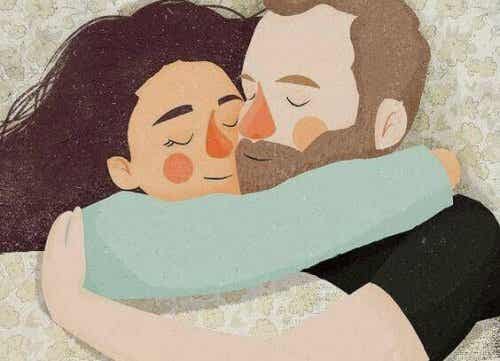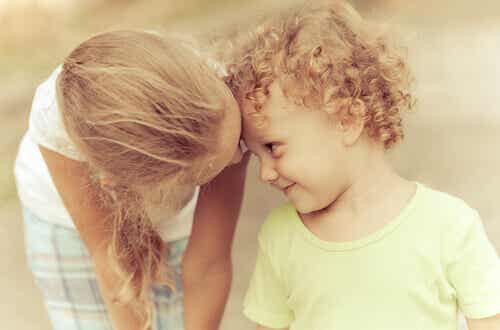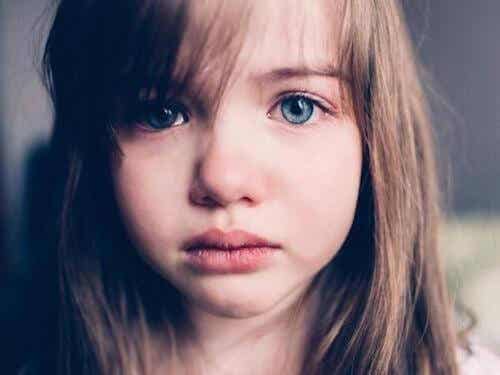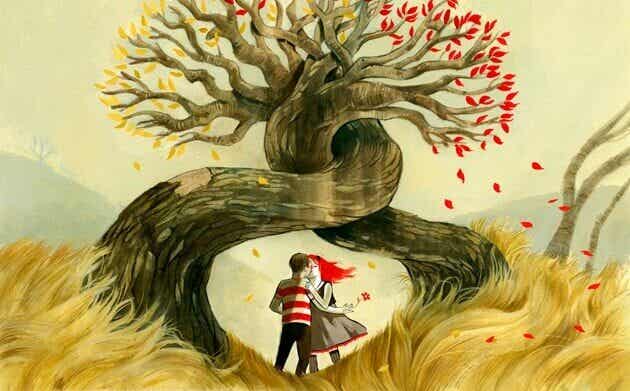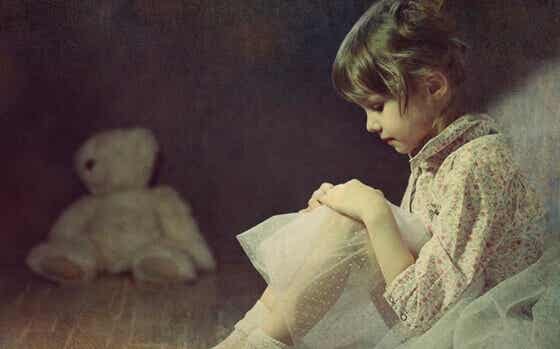
Last update: October 02, 2017
Attachment is a close bond that is forged with the people who take care of us and give us security. Sometimes, however, an avoidant attachment develops.
In the initial phase of life, for example, it comes with a lot of intensity, when we totally depend on the protection of the people around us in order to survive. In that sense, attachment arises naturally as a guarantee or security for survival, while at the same time marking the character of our first relationships.
When the adults who care for us do their job well, we will likely develop a secure attachment, independent of our temperament. We depend on the other, but this does not give rise to any feelings of anxiety or frustration. Vice versa, when we are neglected or rejected, it is easy to develop insecure attachment bonds. It is a form of addiction fraught with anguish and ambivalence.
“Enemies like hatred and attachment have no legs, arms or other limbs, and they have no courage or skill. How, then, did they make me their slave? "
-Shantideva-
The way in which those bonds are formed in the first years of our life will greatly affect the way we relate emotionally with others, except to undertake a conscious intervention in this regard.
We can therefore say that these bonds leave a very deep, almost indelible imprint on us. In adulthood it is possible to find a tendency to replicate the attachment style experienced in childhood: somehow, the first attachment relationships taught us what to expect from others and what not, whether it is true or not.
The theory of attachment
John Bowlby, an English psychoanalyst, took an interest in the subject and developed a theory about it. Based on his observations, he was able to establish that the human being has a phylogenetic predisposition for the development of bonds, mainly aimed at people who give us protection and security or who, conversely, should provide it for us.
Later, psychologist Mary Dinsmore Ainsworth identified three types of attachment: secure, ambivalent or resistant and avoidant. According to his research, most people develop the first type, but there are also a good number of individuals who have the second or third type.
Secure attachment allows you to build close and spontaneous emotional bonds. Insecure attachments (resistant or avoidant), on the other hand, give rise to strong repression and difficulties in building intimate bonds.
The origin of avoidant attachment
When parents have a positive attitude and a good disposition towards their child, the child will develop a secure bond. In these cases the child is led to act in a predictable way: if the mother moves away, he cries and feels discomfort for a few seconds, before concentrating on something else around him. When the mother returns, she is happy, expressing it with affection and glee.
If the parents show themselves distant or in some way they come to reject their own child, or on the contrary if they prove themselves too attached to him, the baby is likely to develop an insecure attachment. When this happens, the child perceives that his needs are not being met or fears that they will remain unsatisfied in the future: hence a sense of anxiety or avoidance as a form of protection against abandonment or anticipated indifference.
The little one can even learn that displays of affection disturb the beings he loves most, namely his parents. The child, therefore, begins to keep his emotions to himself. In these cases, when the mother goes away, he barely reacts. When he comes back, he remains distant and absorbed in his thoughts. In this way he develops a false independence.
Avoidant attachment: how to overcome it
The effects of avoidant attachment carry over into adulthood. Children raised with this model they turn into adults practically unable to express emotions, much less to feel and identify them. Adults who try to get away from everything and everyone, often indolent to others and highly indifferent to their own feelings.
These people will try to find a solution to problems in the outer world, as the inner dimension is of little relevance to them.
This situation will have particular consequences in the ambit of love affairs. The person feels anguish at the idea of losing a loved one. He believes that by not showing his emotions or minimizing them, he will protect himself from any suffering.
He escapes from real dialogues and is frightened by the thought of those to come. Instead of expressing her discomfort in words, she acts reluctantly and stages false conflicts. He suffers a lot because he is unable to love serenely - on the contrary, he always loves as if a grave threat hangs over his head; a threat that he is sometimes unable to identify.
Although internalized attachment patterns tend to remain, it is always possible to moderate and reduce them. Sometimes the loss of one of the beloved figures can lead to reflections and changes in this regard. Sometimes this can be achieved through psychotherapy. It is also possible to become aware of the problem and work individually to learn to relate to the world in a more constructive way.
To overcome avoidant attachment, it is necessary to restore the relationship that exists between the person and his inner world, in many cases to recover a strongly damaged self-esteem that causes dull (unidentified) pain. Only when this relationship heals can the person give value to the inner world of those around him. Learning to evaluate one's own emotions gives rise to the possibility of considering those of others.
In this sense, it is important to change one's communication standards. Opening up, for better or for worse, leading to the creation of a controlled expression of emotions by giving others the opportunity to accept them, validate them and, in some cases, accompany them.
Said that it seems easy, but we know that learning is easy, but unlearning is even more so. Everything we learned in childhood, or much of it, establishes the basis for how we build the rest of the knowledge and habits that characterize us. For this reason, it is often recommended to ask for the help of a professional, in order to avoid that by moving an important element such as the type of attachment, an earthquake that marks our destruction is generated.




